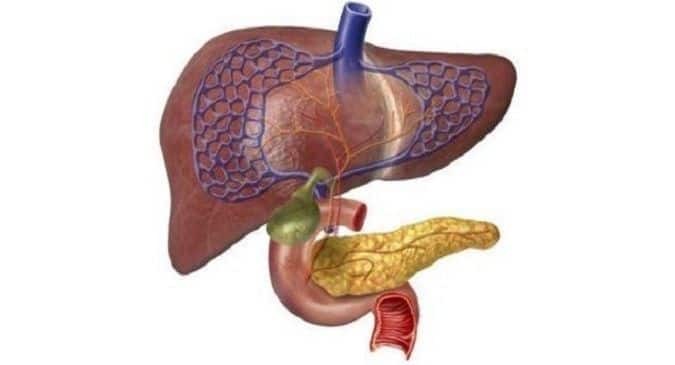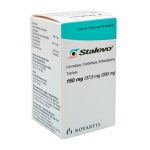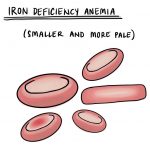
Contents
What Is Cholestasis?
Cholestasis occurs when bile fails to flow properly. Bile, produced by the liver, aids in the digestion of dietary fat and helps eliminate bilirubin. Bilirubin is an orange-yellow pigment created when red blood cells break down. When cholestasis occurs, bile and bilirubin accumulate in the bloodstream, resulting in yellow and itchy skin. Cholestasis can affect people of all ages, including newborns. Contributing factors include genetics, pregnancy, medications, and certain diseases. While some causes of cholestasis are easily treatable, others are more serious. It is important to promptly consult with a doctor about symptoms to receive appropriate care. Here is more information to help you understand cholestasis and collaborate with your doctor for effective treatment.
What Causes Cholestasis?
- Illness: Cholestasis can be triggered by diseases or infections that harm cells, such as viral hepatitis, alcoholic liver disease, primary biliary cholangitis (inflammation of the bile ducts), liver cancer, bacterial infections (sepsis), certain genetic disorders like sickle cell disease, and Hodgkin’s and non-Hodgkin’s lymphoma. Additionally, certain autoimmune diseases, inflammatory bowel diseases like Crohn’s disease, and cystic fibrosis can also cause cholestasis.
- Medications: Cholestasis can be induced by various medications, including antibiotics (such as amoxicillin and clavulanate), antifungals, antipsychotics, antidepressants, anti-inflammatories, anti-thyroid drugs, and oral birth control pills. Drugs that suppress the immune system may also lead to cholestasis.
- Parenteral Nutrition: Cholestasis can develop when one receives nutrition through means other than the intestines, such as intravenous feeding.
Extrahepatic cholestasis can be caused by:
- Bile duct problems: Gallstones, cysts, tumors, and certain diseases can obstruct or narrow the bile ducts. For instance, primary biliary cholangitis, a chronic disease, may scar or destroy these ducts. Newborns can also experience blocked or scarred ducts, known as biliary atresia.
- Pancreatitis: Inflammation of the pancreas can impede bile flow.
Cholestasis of Pregnancy
Pregnancy leads to elevated estrogen levels, which can hinder or halt bile flow. Intrahepatic cholestasis of pregnancy (ICP), also called obstetric cholestasis, affects approximately 1 or 2 out of every 1,000 pregnant women. ICP cannot be prevented, but medical intervention can manage it.
Risk factors for cholestasis during pregnancy include:
- Carrying multiple babies
- Having a family history of cholestasis or ICP
- Existing liver damage
- Chronic hepatitis C
- Undergoing in vitro fertilization (IVF) treatment
- Being of Scandinavian, Indian, Pakistani, or Chilean descent
ICP is more likely to occur during the second or third trimester. Common symptoms include itchy hands and feet, worsening itchiness at night, yellowing of the skin and eyes, dark urine, and the presence of dark-colored stools. It is crucial to inform your doctor about these symptoms.
ICP can raise the risk of the following complications for the baby:
- Premature birth
- Stillbirth
- Breathing difficulties
- Abnormal heart rate or movement issues
ICP typically resolves within 4 to 6 weeks after childbirth. However, it may recur in future pregnancies or when using oral birth control.
Cholestasis Symptoms
Whether cholestasis originates inside or outside the liver, similar symptoms manifest:
Typical symptoms include:
- Itching
- Jaundice (yellow skin or eyes)
- Dark urine
- Light-colored stools
- Foul-smelling stools
Additional symptoms may include:
- Abdominal pain
- Sallow complexion
- Loss of appetite
- Vomiting
- Fever
- Fatigue
Infants with cholestasis may develop jaundice 3 to 6 weeks after birth.
Untreated cholestasis can hamper nutrient absorption, leading to inadequate calcium and vitamin D levels. This, in turn, can weaken bones and increase bleeding if vitamin K levels drastically drop. Unexplained weight loss can also occur, and children with cholestasis may have difficulty gaining weight.
Cholestasis Diagnosis
A doctor will inquire about your medical history, the duration of your symptoms, and any medications you may be taking. It is important to disclose any excessive alcohol consumption.
A physical examination may include checking for broken blood vessels under the skin, a swollen spleen or gallbladder, fluid accumulation in the abdomen, and abdominal pain that sometimes radiates to the right shoulder.
You may also undergo:
- Blood tests: These tests assess liver function. Specific enzymes, like alkaline phosphatase and gamma-glutamyl transpeptidase, generally indicate cholestasis when elevated. Bilirubin levels are measured to gauge the severity. However, blood tests cannot determine the exact cause.
- Imaging tests: Scans can help detect blockages or tumors. Ultrasounds, computed tomography (CT) scans, or magnetic resonance imaging (MRI) scans generate images of your organs using sound waves, X-rays, or radio waves. If a bile duct blockage is suspected, more detailed imaging might be necessary.
- Liver biopsy: A sample of liver tissue may be taken to gain further insights into its condition.
Cholestasis Treatment
The treatment for cholestasis depends on its underlying cause. If a disease or infection is present, it must be addressed. Medication adjustments may be necessary. In cases where an obstruction is obstructing bile ducts, surgical removal may be required. Placement of a stent, a device that keeps the duct open, might be deemed necessary.
To alleviate itchiness during recovery, doctors can prescribe medications that prevent bile from reaching the skin.
Additional measures may include:
- Avoiding alcohol consumption
- Discontinuing specific medications
- Supplementing with calcium, vitamin D, or vitamin K
- Taking medications to reduce bilirubin levels in the bloodstream
- Adopting dietary changes
- Undergoing surgery
- Considering a liver transplant if other treatments fail
Cholestasis of Pregnancy Treatment
Pregnant individuals with cholestasis may receive ursodeoxycholic acid to enhance liver function and decrease blood bile levels. If this proves ineffective, early delivery may be recommended for the safety of the mother and baby. Delivery around 37 or 38 weeks ensures that the baby can breathe independently.
Newborns affected by cholestasis may require surgery and additional nutritional support. At some point, a liver transplant may also be necessary.
Outlook After Cholestasis
With appropriate treatment and restored bile flow, individuals can return to normal. Treatment may involve adjustments to medication, surgery, or management of an underlying disease. For pregnant individuals, cholestasis typically resolves after childbirth. Certain causes of cholestasis may require long-term dietary and medical intervention.
(c)2019 WebMD, LLC. All rights reserved.
Stanford Children’s Hospital: “Cholestasis of Pregnancy.”
Mayo Clinic: “Bilirubin test.”
Merck Manual: “Cholestasis.”
Shah, R., John, S. Cholestatic Jaundice (Cholestasis, Cholestatic Hepatitis), StatPearls Publishing, 2019.
Boston Children’s Hospital: “Cholestasis.”
Canadian Journal of Gastroenterology and Hepatology: “New Insights in Genetic Cholestasis: From Molecular Mechanisms to Clinical Implications.”
Clinical Liver Disease: “Systemic Causes of Cholestasis.”
Hepatology Communications: “Drug-induced cholestasis.”
International Journal of Molecular Sciences: “Hepatotoxicity by Drugs: The Most Common Implicated Agents.”
National Institute of Diabetes and Digestive and Kidney Diseases: “Primary Biliary Cholangitis,” “Biliary Atresia.”
Cleveland Clinic: “Cholestasis of Pregnancy.”
World Journal of Gastroenterology: “Atypical causes of cholestasis.”
Clinics in Liver Disease: “Overview of Chronic Cholestatic Conditions in Adults: Terminology and Definitions.”
- Medical Reviewer: Sabrina Felson, MD


